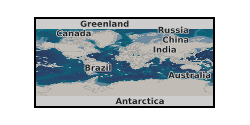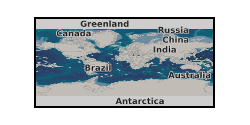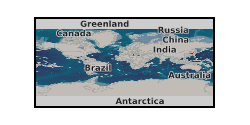Peridotite
Type of resources
Topics
Keywords
Contact for the resource
Provided by
Years
Formats
Representation types
Update frequencies
-

In this project we developed a new geobarometer for mafic and ultramafic igneous rocks, which can be used by the scientific community for a wide range of mineralogical and petrological studies. The material here include the description of the geobarometer, guidelines for its use, software and chemical data acquired for some case studies.
-

The data are magnesium (Mg) isotope composition, i.e. the relative difference of isotope ratios as defined in Coplen (2011, doi: 10.1002/rcm.5129). The reference was DSM-3 (see Galy et al., 2003, doi: 10.1039/b309273a) and data are given in per mil. Samples consisted of terrestrial peridotites and basalts as well as a suite of meteorites including chondrites, shergottites, diogenites and one angrite. A large portion of the data have been published in Hin et al. (2017, doi: 10.1038/nature23899).
-

These plagioclase and clinopyroxene mineral chemical and Sr isotope data come from Unit 10, Rum Layered Suite, NW Scotland. They underpin a publication entitled 'Rapid crystallisation of precious metal-mineralised layers in mafic magmatic systems', to be published in Nature Geoscience in 2020.
-

This project is aimed at understanding what kind of conditions the Earth's core formed under and how this affected the amount of oxygen present in the rocky interior of the Earth. It uses experiments which simulate the very high pressures and temperatures that would have been present in the Earth's interior when the core formed, combined with very precise chemical analyses of these experiments. From these results I will learn how certain chemical elements distributed themselves between the metal core and the rocky outer part of the Earth, and whether this distribution behaviour changes with different conditions and with the amount of oxygen present. By comparing the results I get from the experiments with the chemical compositions of rocks from the Earth and very primitive meteorites we will be able to understand better how the Earth's core formed, and how this may have affected the chemistry of our planet and the development of its atmosphere and oceans. Four papers are linked to this grant: Stable chromium isotopic composition of meteorites and metal-silicate experiments: Implications for fractionation during core formation Unlocking the zinc isotope systematics of iron meteorites Iron isotope tracing of mantle heterogeneity within the source regions of oceanic basalts Isotopic evidence for internal oxidation of the Earth's mantle during accretion
 NERC Data Catalogue Service
NERC Data Catalogue Service